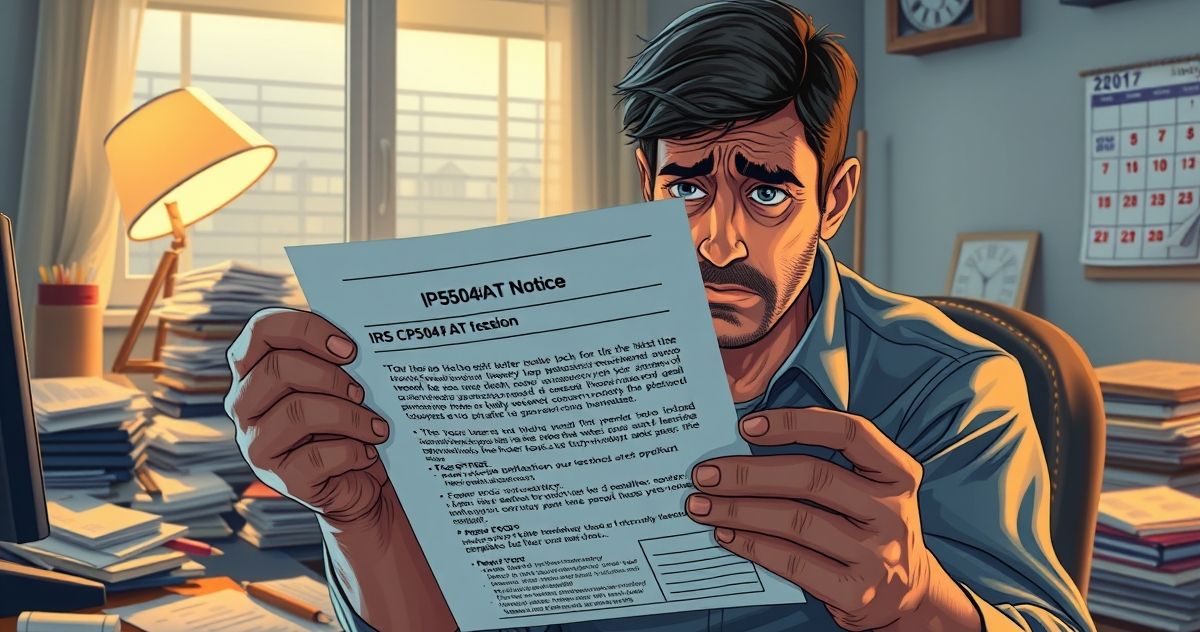Understanding the CP504AT Notice: A Comprehensive Guide
The Internal Revenue Service (IRS) issues various types of notices to communicate essential information regarding tax accounts, one such notice is the CP504AT Notice. This document is an imminent reminder of an outstanding tax debt, urging taxpayers to take immediate action to resolve the unwarranted dues. In this detailed guide, we shall explore the purpose, components, compliance requirements, and implications tied to the CP504AT Notice, emphasizing the criticality of timely and appropriate responses.
What is the CP504AT Notice?
The CP504AT Notice serves as an urgent message from the IRS, indicating that the taxpayer has an existing debt, likely resulting from unpaid taxes. It typically warns about the IRS’s intent to levy or enforce collection measures on state tax refunds to settle the owed amount. This notification is part of the IRS’s collection process, signifying the seriousness of the debt situation. Taxpayers may receive the CP504AT if they have not responded to previous notices such as the CP501 or CP503, which serve as preliminary alerts about a balance due.
Primary Purpose of the CP504AT Notice
The pivotal objective of the CP504AT Notice is to prompt taxpayers to address unpaid taxes promptly. By notifying them about the imminent risk of levy actions, such as seizing state tax refunds, the IRS instills an urgency to prioritize the payment of the outstanding balance. The notice can serve as both a wake-up call for taxpayers who have overlooked earlier communications and a final reminder before more severe actions are pursued.
Key Features and Components
The CP504AT Notice is comprehensive and consists of several essential components designed to convey critical information:
- Tax Period and Amount Owed: The notice clearly specifies the tax period for which the debt is owed, along with the precise amount due.
- Interest and Penalties: It highlights any accrued interest and penalties, emphasizing the growing expense of delayed payments.
- Consequences of Non-Payment: The notice elaborates on potential enforcement actions, particularly mentioning the IRS’s intent to levy state tax refunds.
- Payment Instructions: Detailed instructions on how to settle the debt are included, offering multiple payment methods such as checks, electronic payments, or installment plans.
Relevant Filing or Compliance Requirements
Upon receiving a CP504AT Notice, taxpayers should act swiftly to align their actions with IRS requirements and prevent further escalation. Here are key compliance actions:
- Immediate Payment: Where possible, pay the outstanding balance in full to halt further penalties and potential levies.
- Installment Agreements: Taxpayers unable to pay the full amount can contact the IRS to negotiate a manageable installment payment plan.
- Offer in Compromise: In cases of financial hardship, explore whether an offer in compromise, which allows settling the debt for a reduced amount, is acceptable.
Penalties or Consequences for Non-Compliance
Ignoring a CP504AT Notice can lead to severe consequences that exacerbate financial burdens. Potential outcomes include:
- Levy on State Tax Refund: The IRS may levy the taxpayer’s state tax refund to offset the outstanding debt.
- Additional Penalties: Continued accrual of interest and late payment penalties increases the debt amount.
- Further Collection Actions: Persistent negligence may result in additional IRS collection activities, such as wage garnishments or bank levies.
Significance of the CP504AT Notice
The CP504AT Notice holds significant importance in the realm of tax resolution and financial compliance. It plays a crucial role by:
- Highlighting Urgent Action: By detailing imminent risks, the notice prompts prompt taxpayer actions essential to forestall further enforcement measures.
- Guiding towards Resolution: Although alarming, the notice provides taxpayers with the necessary information and avenues to mitigate debts effectively through specified payment methods.
- Encouraging Financial Responsibility: It serves as a reminder of the importance of addressing tax obligations promptly and safeguarding financial well-being.
In Conclusion, the CP504AT Notice is an important communication from the IRS designed to inform and encourage taxpayers to rectify unpaid tax situations before they escalate. A careful and immediate response, encompassing due payment and compliance measures, is pivotal in reducing severe financial repercussions. Understanding the nuances of such IRS documents equips taxpayers with the necessary insights to navigate tax challenges, achieving resolution, compliance, and overall financial health.

